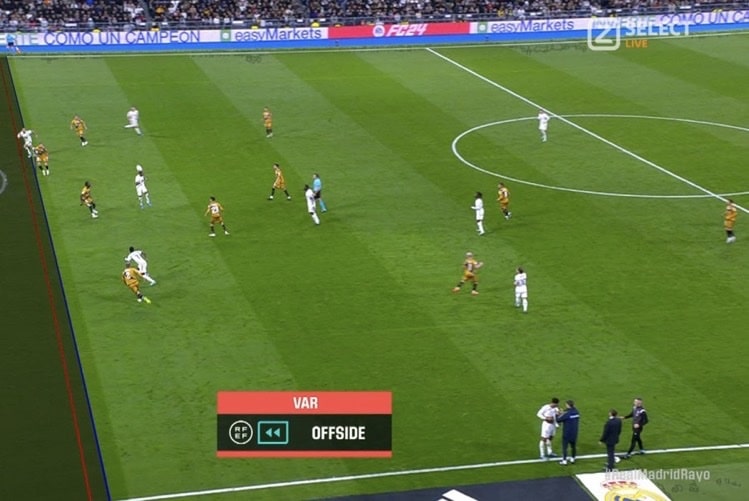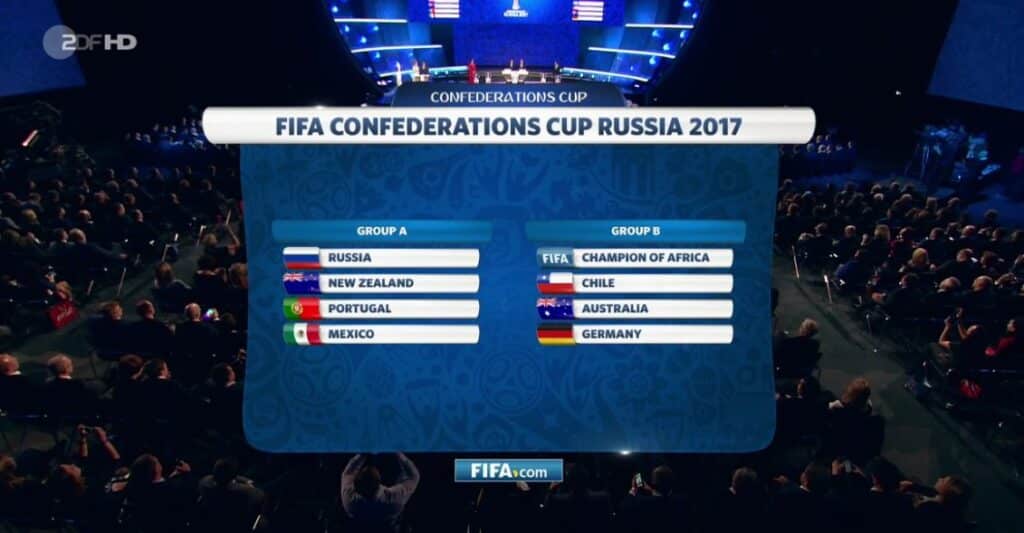
VAR relies on multiple high-speed cameras positioned around the football field, which continuously record the on-pitch action. The connected control room, where the VAR team is stationed, continuously monitors this footage.
Now, let’s take a brief look at how this concept was gradually introduced into reality.
Technological Challenges and Early Adoption
As with any new technology, the journey of VAR from its conception to implementation wasn’t smooth. Initially, the idea was met with skepticism. Many believed that the introduction of technology could disrupt the flow of the game. Others argued that the inaccurate calls made by referees were part of football’s charm.
However, the gravity of some incorrect calls, which resulted in significant consequences, including the outcome of matches and tournaments, paved the way for VAR’s acceptance. It was agreed that if technology could help to get those game-altering calls right, then it was worth the disruption it might cause to the traditional pace of the game.
Regulations and Its Integration
Before VAR could become a widespread practice, it had to undergo intensive testing and regulatory approval. This process was far from easy.
Football’s long-standing fox, the International Football Association Board (IFAB), is responsible for determining the Laws of the Game. VAR, being a fundamental shift from football’s traditional refereeing, required IFAB’s green light.
Extensive testing and subsequent changes followed before IFAB modified Law 5 of the Game in 2018, cementing VAR’s place in the rulebook.
Understanding VAR’s Implementation
Finally, VAR was ready for implementation. Yet, it’s been a journey of constant learning and adjustments. VAR’s official debut happened at the Club World Cup held in Japan in 2016.

Its implementation in the FIFA World Cup in Russia in 2018 marked its widespread acceptance. But the story didn’t end there. From Europe to North America, leagues began adopting VAR with varying levels of success.
Indeed, the implementation of VAR has been a process of constant learning, improving, and refining. It has radically reshaped the way we play, watch, and even discuss football today.
So, as we see, the journey of VAR from concept to implementation has been a fascinating one, full of hurdles, resistances, adjustments, and ultimately, acceptance. And while the technology continues to evolve, its impact on the game is undeniable.
The Early Days: VAR’s Slow Path to Adoption
Let’s take a step back and analyze the early, less-glamorous days of the Video Assistant Referee (VAR). Although the system holds significant merit today, its journey towards adoption was a slow and arduous one.
Initially conceived as a tool to deliver fair play and decrease human errors, VAR came across intense scepticism.
Traditionalists believed that it would disrupt the game’s flow and infringe upon the referee’s authority. Many pundits and fans alike were concerned about the time delays it might introduce. Then, of course, there were the technical hurdles to consider.
The First Trials
In 2012, the International Football Association Board (IFAB) approved the testing of goal-line technology, providing a springboard for VAR. This experimental phase required extensive coordination between football associations, tech companies, and regulatory bodies.
However, it was the 2014 World Cup’s notorious ‘goal that wasn’t’ which truly underlined the necessity of VAR.
The Dutch forward Robin van Persie scored an equalizer for the Netherlands, but it was disallowed. Replays showed that the decision was a close call, sparking debates about the necessity of a technology-based solution. IFAB, shaking off the resistance, decided to experiment with VAR at the 2016 Club World Cup.
Continuous Adjustments
As trials continued, adjustments were made. Decisions were initially constrained only to goal incidents, penalty decisions, direct red card incidents, and mistaken identity issues. Step by step, VAR started gaining acceptance.
However, there were still some hiccups. Matches saw frequent interruptions, decisions were inconsistent, and communication between the referee, VAR officials, and the audience left much to be desired. Football needed a comprehensive VAR guideline and operational system.
“The slow adoption of VAR was a necessary learning phase. It allowed the governing bodies to tweak the system, train personnel, and establish refined protocols”, noted by an anonymous FIFA official.
This meticulous process defined VAR’s path into the heart of football. In 2018, VAR saw its grand debut at the FIFA World Cup in Russia. Since then, it has become an integral part of various football leagues across the world.
In conclusion, the route to VAR implementation was never meant to be fast. Instead, it was meant to be careful, thorough, and structured to ensure that upon its full-scale launch, the system was ready to withstand the highest level of scrutiny.
The journey of VAR clearly signifies the importance of patience and meticulous planning when introducing new technology.
Refining the System: VAR’s Continuous Development
The evolution of VAR can only be understood by looking at how it has, over time, been continuously refined and developed. The system’s journey is marked by several key moments of technological enhancement that have been instrumental in its implementation.
Crucially, VAR technology didn’t emerge as a fully-formed idea but was the result of many years of iterative testing and refinement. Repetition and reassessment allowed its creators to iron out flaws, enhance accuracy, and streamline the application for practical use in football matches.
“The evolution of VAR is a story of constant improvement – a testament to the power of innovation when grounded in careful research and thoughtful application.”
Let’s unwrap a few important milestones in VAR’s development journey:
- The Real-time Aspect: Initially, VAR relied on recorded footage that was reviewed after substantially long delays. A fundamental leap in development was the introduction of real-time video review, massively reducing the gap between incident and decision.
- Integration with On-field Communication: Bridging the gap between the VAR team and the on-field referees was another significant step forward. Making use of earpieces and microphones, referees could now be instantly informed about VAR decisions.
- The Introduction of 3D Offside Technology: Initially, determining offside decisions with VAR could be a contentious issue. However, the implementation of 3D offside technology revolutionised this, providing a clear, indisputable visual representation of offside positions.
However, the VAR system is not a finished product. Even today, it’s a subject of much debate and discussion. While some critics argue that it disrupts the flow of the game, others commend it for its drive towards a fairer sporting environment.
But one thing is clear: VAR has become an integral part of the modern game and its evolution is a testament to the possibilities of technological advancement in sports.
In the “Refining the System” phase, the journey of VAR has been all about learning, improving, and adapting. It’s been a remarkable testament to the potential of technology to transform traditional sports, leading to a future where fan experience, fairness, and excitement can co-exist harmoniously.
VAR Technology: Exploring the Tools Behind the System
VAR – or Video Assistant Referee – is hardly a standalone system. It’s deeply intertwined with a host of technologies and tools that make it possible. With you here, let’s take a close look at what’s ticking behind the scenes.
The core workflow of VAR involves three primary steps, each bolstered by its own set of tools and technologies. These steps include:
- Recording: This is captured by multiple high-definition cameras stationed around the field. These cameras record every angle of the game, ensuring no movement is missed.
- Analysis: The recorded footage is then transmitted to a reviewing team. This team, stationed in a centrally located Video Operation Room (VOR), uses advanced video playback tools to scrutinize every detail of the play.
- Communication: Once a decision has been made, the referee on the field is informed via wireless communication devices. At the same time, graphics and video footage can be provided to broadcasters, enhancing the viewing experience for fans around the world.
It’s important to note that the quality of the equipment used for these steps can greatly impact the effectiveness, and by extension acceptance, of the VAR system.
Now, let’s look into crucial VAR-specific technologies that bring this all together:
- Offside Line Technology: One of the trickiest aspects of a football match to judge, the offside rule can be decisive in many games. With the help of 3D lines superimposed on the existing footage, VAR can make this process more precise and less prone to human error.
- Slow Motion Playback: Vital for making accurate calls, this technology is used to break down high-speed actions and spot potential rule infringements that might have been overlooked by the on-field referees.
- Instant Replay: Not just for the benefit of the TV audiences, referees often depend on this function to review contentious incidents before making crucial decisions.
While the technology creates a powerful foundation, the consistent application and interpretation of VAR significantly influences its adoption and effectiveness. That’s a topic we’ll delve into next.
Regulations and Its Integration into VAR
When we talk about soccer, or any other sport for that matter, regulations are a fundamental aspect that shapes the game. When Video Assistant Refereeing (VAR) was introduced, it was no exception to this rule.
There had to be a set of standards, a framework, that would guide its integration into the game. And just like any other change, the integration was not immediate, nor was it seamless.
The International Football Association Board (IFAB), the body that determines the laws of soccer, was faced with the daunting task of creating rules that would guide the utilization of this technology. The board had to ensure that the integrity of the game was maintained while modernizing it.
After some deliberations and trials, the official laws were instituted. The regulations stated that VAR should only intervene in the ‘clear and obvious errors’ or ‘serious missed incidents’ in four game-changing scenarios: goals, penalty decisions, direct red cards incidents and mistaken identity situations.
- Goals: VAR reviews decisions made in the lead-up to a goal. This includes potential fouls and offside decisions before the goal.
- Penalty decisions: VAR assists in determining whether a penalty should be awarded for an offence within the penalty area.
- Red card incidents: VAR helps the referee decide whether a red card should be given for a tackle or an offence.
- Mistaken identity: VAR can confirm if the correct player has been identified and punished for an offence.
These regulations paved the way for a more fair and clear game. However, they were not without controversy. Different stakeholders, including players, referees, fans, and administrators had varied views on the matter.
Some were excited and welcomed the changes, seeing it as a necessary evolution in football. Others were skeptical, fearing VAR would break the flow of the game.
Despite these disagreements, the regulations were put into practice. Referees underwent training to understand and effectively use VAR technology during matches. This was a significant step, transitioning VAR from being just a concept to becoming an integral part of the game of soccer.
VAR Around the World: Global Adoption and Adaptation
When you look into the world of football today, Video Assistant Referee technology, known as VAR, has wound its way into the hearts of virtually all global football associations.
What began as a concept, a mere thought of changing the game forever, has indeed been woven into the very fabric of football management universally.
From its inception and despite some initial doubts and teething troubles, VAR embraced a global outlook. It was never going to be a tool limited to one league, one country, or one tournament. Its target was big – the beautiful game at its entirety.
The story of VAR’s adoption around the world is fascinating, reflecting the diverse ways in which different countries and leagues have adapted and shaped policy and practice to meet their specific needs.
Let’s take a peek at how the system has made its way around the world, shall we?
The FIFA World Cup: The VAR Launching Platform
On the global stage, VAR first made its mark at the FIFA Confederations Cup in 2017 as a trial run. However, the technology firm-handedly proved its worth at the 2018 FIFA World Cup in Russia, forever marking its impact on the game.

Instituted under the watchful eye of football’s global governing body, VAR was used to make real-time decisions impacting the outcome of matches. The success it achieved was instrumental in ensuring its subsequent application across various national and international leagues.
Global Leagues and VAR: A Mixed Response
Post the FIFA World Cup, the adoption of VAR has been interestingly varied. Major leagues, like England’s Premier League (EPL), Spain’s La Liga, and Germany’s Bundesliga, were quick to implement VAR, while others took a more measured approach.
The EPL, for instance, despite being an early adopter, faced significant backlash from players, managers, and fans alike due to perceived inconsistencies in its usage. Yet, the league remained committed to VAR, constantly refining its application, guidelines, and protocols to improve decision-making accuracy.
In contrast, Italy’s Serie A has embraced VAR with less controversy, with their model often held up as an example of effective usage. Meanwhile, in other parts of the world, like South America’s Copa Libertadores and Asia’s AFC Champions League, VAR is steadily gaining recognition and acceptance.
Undeniably, the path VAR has taken to weave itself into the global football fabric is fascinating. Its evolutionary surges have been punctuated by doubters, game-changing decisions, refinements, and ultimately, its adaptation into the sport we all love so much.
VAR’s Growing Pains: Lessons Learned Along the Way
Like any innovation, VAR required a period of experimentation and fine-tuning. Looking back now, it’s clear that while the concept of video assisted refereeing brought immense potential to the sport, its roller-coaster journey has created plenty of teachable moments.
Key among the growing pains was often the inconsistency in its application. Not every decision that should have gone to VAR did, and not every call made by VAR was the correct one. There were controversies, errors, and moments of deep frustration that left players, coaches, and fans scratching their heads.
- Roughly around the time of its inception, there was a lot of criticism about how VAR was slowing the game down. Extrapolating data for decisions not only took time but also disrupted the flow of the game. As a solution, it was suggested that VAR should only be used for game-changing decisions.
- Another pain point was the lack of clear, consistent communication between referees and VAR officials. This led to confusion about how decisions were being made and what criteria were being applied.
- Lastly, the VAR technology itself had its hiccups. Early iterations struggled with problems of clarity in replay videos, and angle precision was far from ideal.
Nevertheless, despite these stumbling blocks, VAR has proven its worth. Over time, each problem has presented an opportunity for growth and improvement. The critiques have played a significant role in refining the VAR process and technology.
“Mistakes are the portals of discovery”
It’s through these problems and shortcomings that VAR has found ways to evolve. The system learnt from the mistakes, and changes were made accordingly. Slowly but surely, VAR started offering more clarity, consistency and accuracy in decision-making, all thanks to the lessons learned from the growing pains.
Transformative Change & Future Prospects
Today, VAR stands at the crossroads of transformative change, ready to take on the future. The lessons derived along the way have been instrumental in shaping how it functions. The journey of VAR may have been bumpy, but the road ahead looks promising.
VAR in Action: Unveiling the Inner Workings
The Video Assistant Referee (VAR) system is quite like a symphony of technology and human decision-making to ensure the fairness of football games. It’s like peering behind a curtain; the implementation of VAR in a live football match is a complex process that requires extensive cooperation and coordination among several parties. Let’s delve a little deeper into how it works.
The VAR team, stationed at the Video Operation Room (VOR), is comprised of the VAR himself and his assistants (AVARs). They have access to up to 33 camera feeds, some exclusive to them. This number can increase in more significant events where there are more cameras. For instance, the 2018 FIFA World Cup had an astonishing 35 cameras per match.
Communications between the VAR team and on-pitch officials are vital in this process. Feedback from the VAR can trigger the on-field referee to stop play, review the footage, and make a decision. Rest assured, this decision-making process is very streamlined to lessen its impact on the match’s flow. In-frame freezes, zooms, and multi-angle reviews are just among the tools at their disposal for optimum decision-making.
Interestingly, the VAR and AVARs’ combined backgrounds bring in a wealth of knowledge. Football referees themselves sit in these roles. Thus, they are not just technologically adept but also comprehend the very essence of the game – a balance that is crucial in making informed decisions during live matches.
The four ‘game-changing’ situations that the VAR focuses on include goals, penalties, direct red card incidents, and mistaken identities. When such an incident occurs that needs a review, the VAR follows a process called the ‘Check and Review’. In simple terms, a ‘check’ is a quick review of an incident. If something suspicious is detected in the ‘check’, it proceeds to a ‘review’ – a more detailed look, often with involvement from the on-pitch referee.
The process seems lengthy when dissected, but in the live scenario, it happens in a matter of minutes, often without us knowing it, hence maintaining the game’s natural rhythm. While the system continues to refine itself, one thing is certain – VAR has added an unprecedented level of transparency and fairness to the beautiful game of soccer.VAR was first introduced in professional football in 2017.
